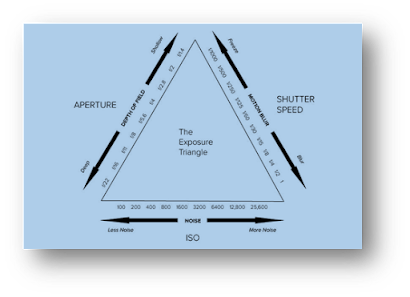Mastering the Art of Exposure: A Comprehensive Guide to Underwater Exposure Mastery
Introduction:
Beneath the ocean's surface lies a mesmerizing world waiting to be captured through the lens of an underwater photographer. The journey from a casual photographer to a skilled artist involves not only capturing the essence of underwater scenes but also mastering the intricacies of exposure. In this in-depth exploration, I will dissect the concept of exposure, delve into the nuances of the Exposure Triangle, and provide a hands-on understanding of how each element within the triangle can significantly impact the final brilliance of your underwater photographs.
- Aperture:
The aperture is the opening in the lens that can be adjusted from the size of a pencil point (or smaller) to nearly as large as the lens itself. It's often represented by the f-stop, which is the gateway that controls the volume of light entering the camera. A lower f-stop widens the aperture, allowing more light, while a higher f-stop narrows it, restricting light.
Just remember that larger aperture openings have smaller numbers (f/1.4, f/2.0, etc.) and smaller apertures have larger numbers (f/16, f/22, etc.). You can think of the f-numbers in terms of fractions (for example f/2 as being 1/2, f/4 as being 1/4, etc.).
For each full stop increase (f/11 to f/8) in the aperture, you are doubling the light received by the sensor.
Effects on Exposure:
- Wider Aperture (Lower f-stop): Perfect for dimly lit underwater environments, it not only illuminates your subject but also creates a dreamy, blurred background, adding an artistic touch.
- Narrower Aperture (Higher f-stop): In well-lit conditions, a higher f-stop enhances the depth of field, ensuring that the intricate details of both foreground and background are vividly captured.
2. Shutter Speed:
Shutter speed determines the duration the camera's shutter remains open. A faster shutter speed freezes motion, while a slower speed captures the fluidity of movement.
For each full-stop increase in shutter speed (80 to 100) you are decreasing the light received by the sensor by half.
Effects on Exposure:
- Fast Shutter Speed: Essential for capturing swift underwater subjects, it delivers razor-sharp images by minimizing motion blur.
- Slow Shutter Speed: In low-light conditions, a slower speed allows more light in, but it requires careful management to avoid undesirable blur.
3. ISO:
ISO measures the camera sensor's sensitivity to light. A higher ISO value increases sensitivity, but it may introduce digital noise.
For each full stop increase in ISO (100 to 125), you double the light received by the sensor.
Effects on Exposure:
- Low ISO: Ideal for well-lit underwater scenes, it ensures clean and sharp images with minimal noise.
- High ISO: In challenging lighting conditions, a higher ISO setting enables the sensor to capture more light, but photographers must strike a balance to avoid excessive noise.
What does all this mean?
- For each full-stop increase in aperture (doubling the light to the sensor), you will need to increase the shutter speed one full stop or decrease the ISO by one full stop. Both adjustments end up halving the light to compensate for the increase in the aperture change.
- For each full-stop increase in shutter speed (decreasing the light by half), you must either increase the aperture one full stop or increase the ISO one full stop. Both of these adjustments double the light received by the sensor to compensate for the shutter speed change.
- For each full-stop increase in ISO (double the light received by the sensor), you must either increase the shutter speed one full stop or decrease the aperture one full stop. Both of these adjustments will decrease the light received by the sensor by half.
- Original Photo: A balanced composition with mid-range aperture, moderate shutter speed, and low ISO for a clear and detailed underwater image.
- Experimentation:
- Wider Aperture: Observe the pronounced background blur, emphasizing the subject's isolation.
- Fast Shutter Speed: Freeze the dynamic movement of the fish for a crisp, action-packed shot.
- Higher ISO: Illuminate the scene in low-light conditions, making the underwater world come alive while managing the potential for noise.
Diving Deeper into Mastery:
I am eagerly anticipating your valuable feedback and suggestions.
Sincerely,
Bob Herb





Comments
Post a Comment
Please let me know your comments.